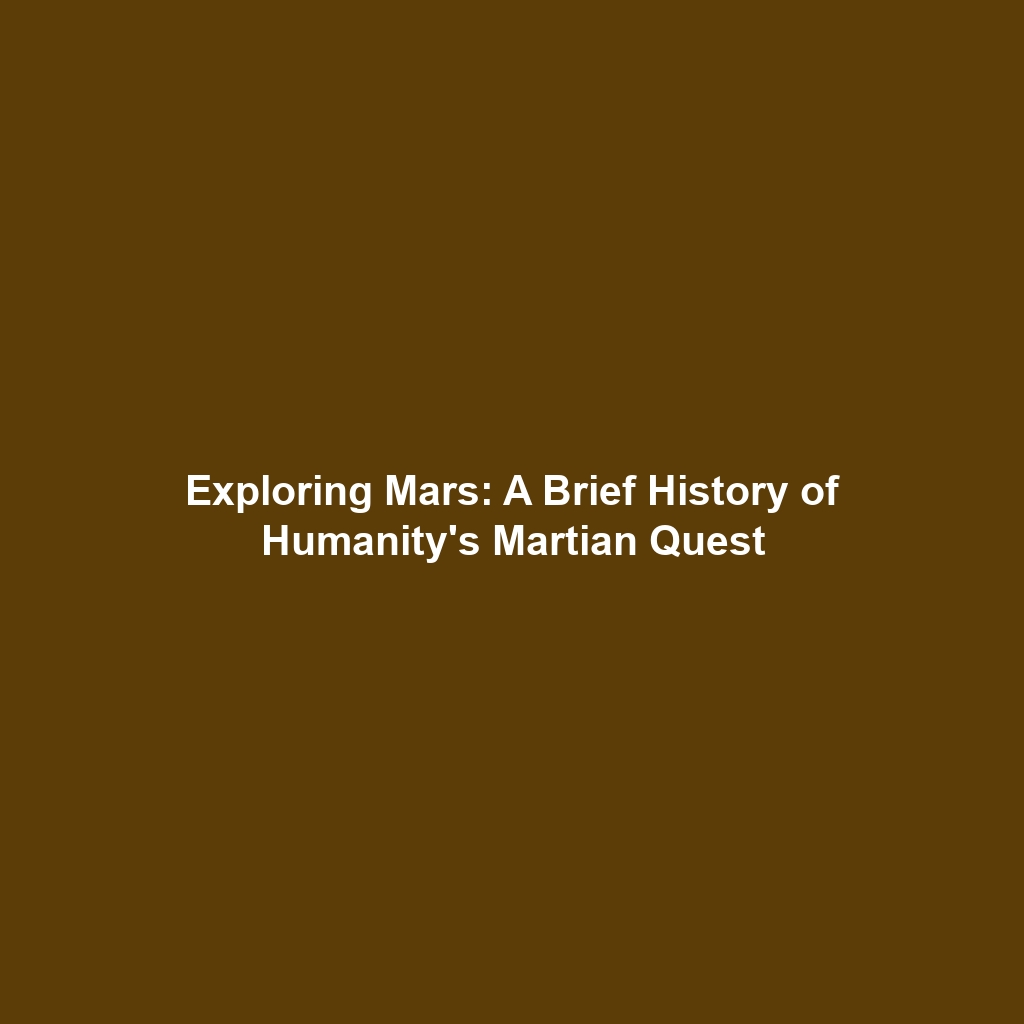History of Mars Exploration: A Critical Overview for Colonizing Mars
The exploration of Mars has captivated scientists and the public alike for decades. Understanding the History of Mars Exploration is significant for the broader endeavor of Colonizing Mars. As we seek to establish a human presence on our neighboring planet, the lessons learned from past missions are invaluable. From early telescopic observations to groundbreaking robotic missions, the quest to understand Mars provides the foundation upon which future explorations and colonization efforts will be built.
Key Concepts in the History of Mars Exploration
The exploration of Mars can be categorized into several major concepts:
Early Observations and Theories
Initial interest in Mars dates back to the late 19th century, with astronomers like Giovanni Schiaparelli proposing the existence of canals on the Martian surface. These sightings sparked imaginations and scientific inquiry into the possibility of life on Mars, laying the groundwork for future exploration.
Robotic Exploration Milestones
The Mars Rovers and orbiters of recent decades have revolutionized our understanding of the planet:
- Mariner 4 (1965): The first successful flyby, providing the first close-up images of the Martian surface.
- Viking Missions (1976): The first landers that conducted experiments searching for signs of life.
- Curiosity Rover (2012): An active laboratory on wheels that has provided insights into Mars’ geology and climate.
Applications and Real-World Uses
The exploration efforts reveal practical applications that aid the endeavor of colonizing Mars. For instance:
- How Mars exploration informs habitat design: Understanding Martian conditions allows scientists to design sustainable living environments.
- Applications of robotic technology: Developments in autonomous systems for Mars exploration can be applied in other remote locations on Earth.
Current Challenges in Studying Mars
Despite advances, several challenges hinder our exploration of Mars:
- The vast distance: Communications delays and high costs complicate mission planning.
- Harsh environmental conditions: Radiation, temperature extremes, and dust storms pose serious challenges for human colonization.
- Technical limitations: Current technologies may not be sufficient for sustainable long-term habitats.
Future Research and Innovations
Innovations are on the horizon that may facilitate Mars colonization:
- Advanced propulsion systems: New technologies like ion thrusters may reduce travel time to Mars significantly.
- Habitat technology: Research into in-situ resource utilization (ISRU) seeks to develop tools for using Martian materials to support colonists.
Conclusion
In summary, the History of Mars Exploration is a pivotal component of our aspirations to colonize the Red Planet. The lessons learned and technologies developed during historic missions will inform future efforts. As we stand on the cusp of potentially establishing a human presence on Mars, continued research and exploration will be essential. For further insights, readers can explore design techniques for Martian habitats and future exploration missions.
